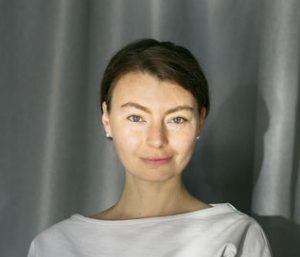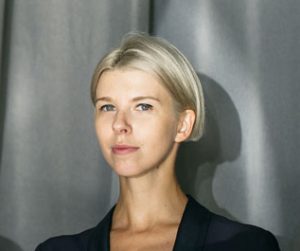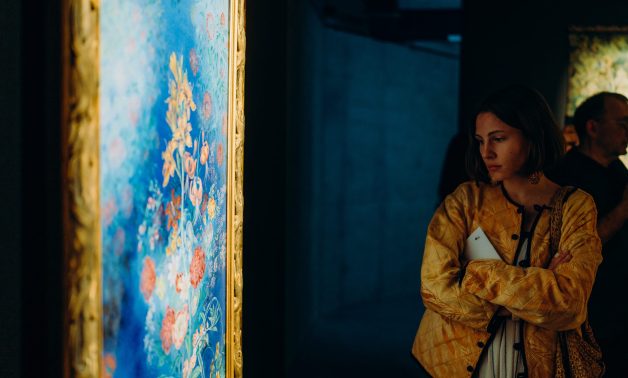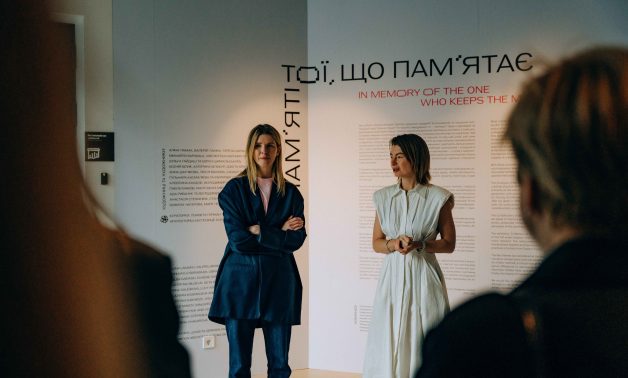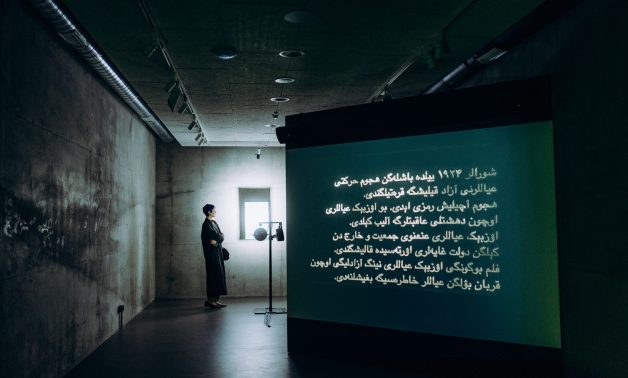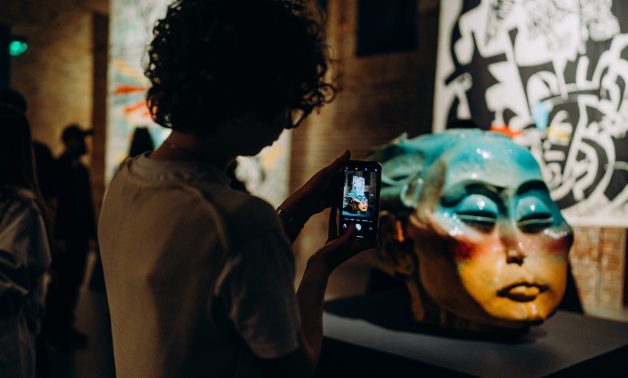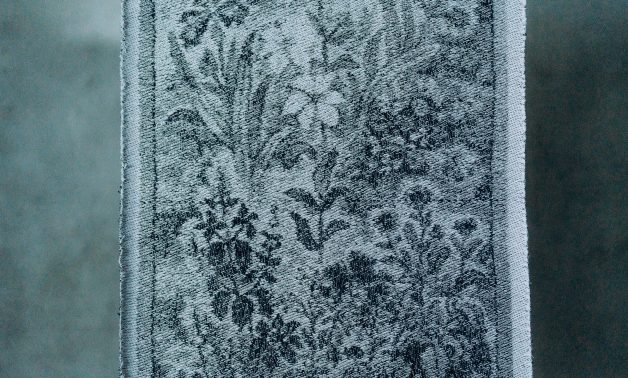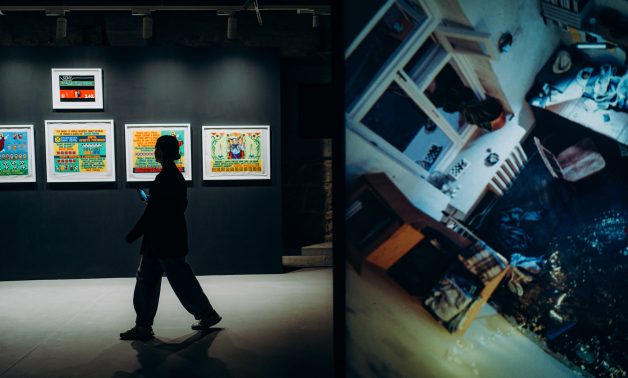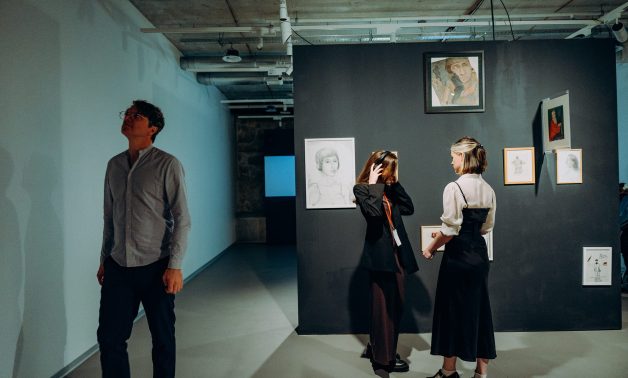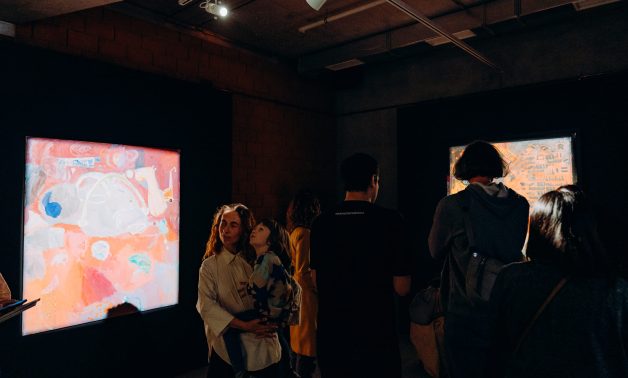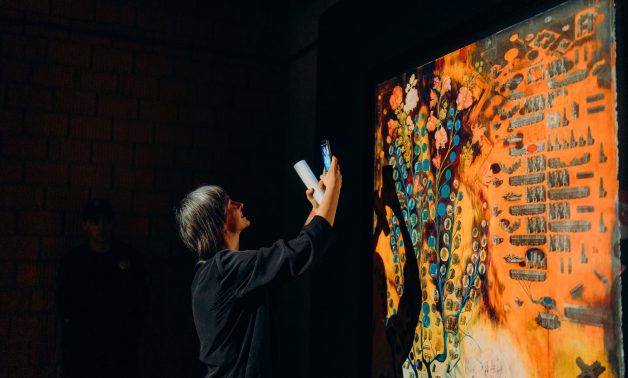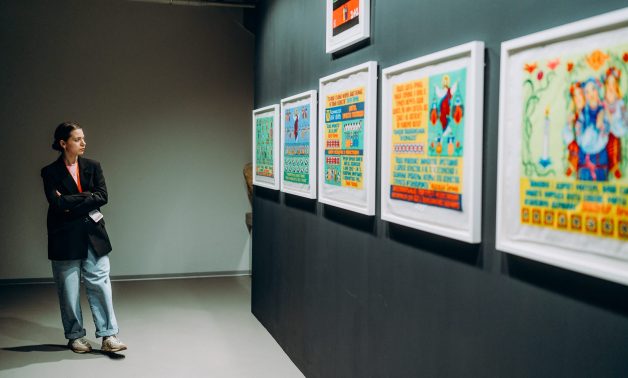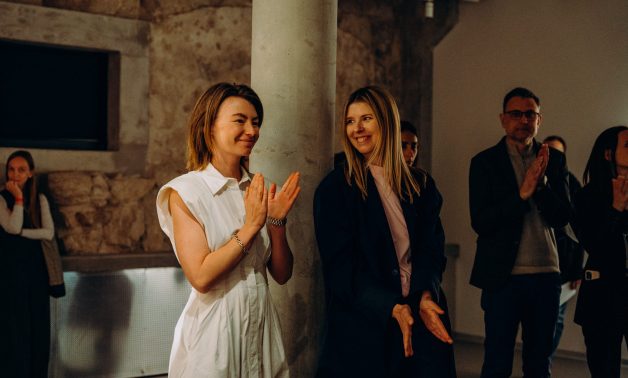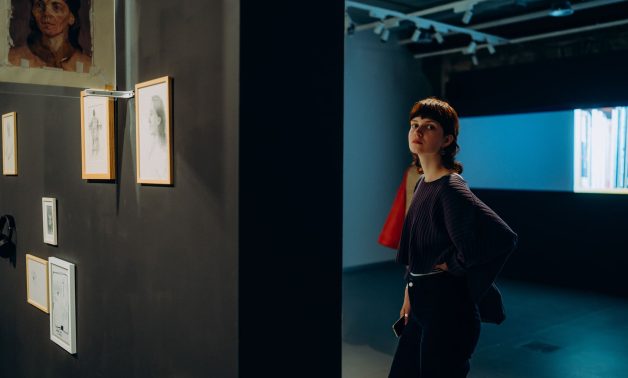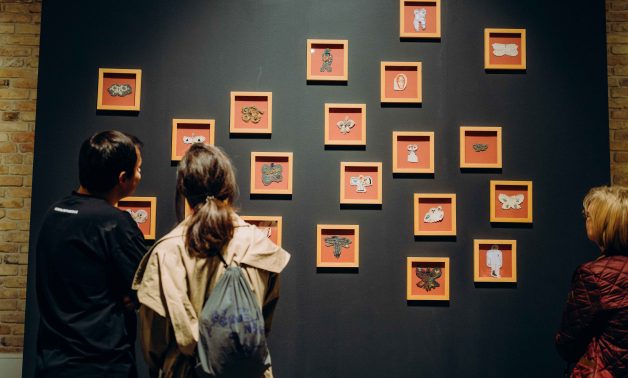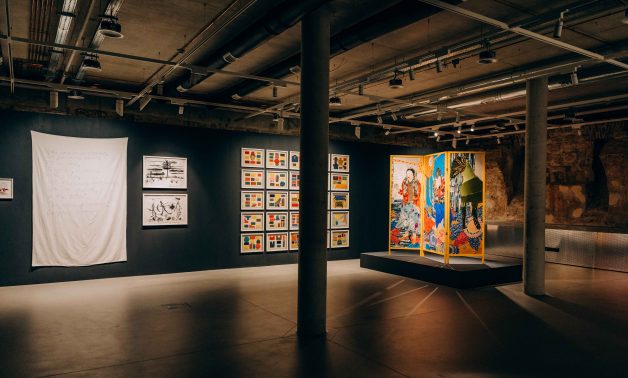Пам’яті тої, що пам’ятає
Що робить митця митцем? Диплом художньої академії? Експонований чи проданий мистецький твір? Власна студія? Чи просто твердження: «я — мисткиня»? Одна з відповідей на це питання може бути такою: статус художника визначає мистецька система, тобто розгалужена мережа інституцій, експертиза, колеги, історики мистецтва та куратори. Хай яким потенційно корумпованим може видаватися цей шлях, але саме складність стосунків у цій системі дозволяє дослухатися до маргінальних, неконвенційних мистецьких голосів. Чим розвиненішою є система, тим меншою є здатність митця уникнути її іноді навʼязливого визнання. Таке твердження є особливо актуальним і складним в українському контексті. Після розпаду радянської системи мистецтва — з усіма її практичними благами й ідеологічними репресіями — нові інституційні рамки для мистецтва тільки виникають, оскільки донедавна існувало не так багато інституцій, здатних створити саме систему.
З такими міркуваннями ми 4 роки тому почали працювати над виставкою і відповідним дослідженням. Тоді ми прагнули порушити питання, які, на нашу думку, треба обговорити, перш ніж робити черговий стейтмент чергового кураторського проєкту, тим паче у новій інституції.
«Пам’яті тої, що пам’ятає» ми розробили задовго до початку повномасштабного вторгнення і майже не змінювали. Цей задум нині видається лише актуальнішим, адже йдеться про перевідкриття окремих епізодів українського мистецтва, інший кут огляду маргіналізованих сторінок та історичних постатей, діялог із суголосними, хоча маловідомими в Україні, практиками художників з країн Східної Європи та Центральної Азії, створеними від 1950-их років і до 2024 року.
Ключові сюжети, над якими ми розмірковували на початку та які, зрештою, втілили в експозиційній оповіді: збереження та відтворення пам’яті (в тім числі, пам’яті про мистецтво минулого) як про художній метод; критичний погляд на ієрархізацію та політичне конструювання ґендерної, національної та жанрової приналежности в опресивних системах (радянській, зокрема); роздуми про витіснені ідентичності, приховані життя та (художні) засоби повернення їх до суспільного надбання сьогодні. І, врешті, свобода художниць та художників, релевантна поза часом та географією.
Прологом нашого дослідження та осердям виставки стала історія життя і творчої практики Аліни Миколаївни Ламах (1925–2020).
Аліну Ламах знають насамперед як дружину художника Валерія Ламаха, відомого монументаліста, ключової постаті покоління шістдесятників, а також автора «Книги схем» — opus magnum українського неофіційного мистецтва, присвяченого авторській філософській системі аналізу світової культури. Валерій Ламах залишив неопубліковані рукописи твору. Упродовж 30-ти років після його смерті у 1978-му, Аліна Миколаївна займалася впорядкуванням, розшифруванням, передруком, редактурою та підготуванням до публікації текстів «Книги схем». Згодом до роботи над виданням долучилася мистецтвознавиця Людмила Лисенко. 2011 року побачила світ електронна версія «Книги схем», у 2015 — перша редакція друкованого варіянту, а 2020 року — обмежений тираж виправленої і доповненої версії тепер уже колективної праці.
Побіжний погляд на перебіг приватного, ба навіть герметичного життя Аліни Ламах спонукає до миттєвого (однак не вичерпного) припущення, що збереження архіву чоловіка стало її головною місією. Однак, якщо поглянути з позиції сьогодення, підґрунтя такої скрупульозної відданості вбачається значно більш складним, ніж потреба упорядкування справ власного чоловіка. Припустимо, що Аліна Ламах розуміла велич та унікальність ідей «Книги схем» поза фігурою автора, осягнула масштаб незворотної втрати для світової культури в разі його незбереження. Припустимо також, Аліна Ламах усвідомлювала, що вона, чи не єдина, здатна продовжити цю працю, підхопити та завершити розпочате близьким їй автором. І вважала так небезпідставно.
Аліна Ламах мала власну художню практику. Живий контакт з її роботами, вперше ретроспективно представленими у Jam Factory Art Center, значно ускладнює перше поверхове враження від їхнього декоративного характеру. А той факт, що робота над ними у 1980–90-ті тривала паралельно з упорядкуванням «Книги схем», відкриває на доробок художниці цілком новий ракурс. Значення її постаті ми розуміємо також завдяки зусиллям Анни Даучікової, словацької художниці та подруги родини Ламахів. Даучікова створила та надала для нашої виставки два фільми, повʼязані з Аліною Миколаївною.
(Не)розказана історія Аліни Ламах дає поштовх до роздумів над основними питаннями виставки. Чи можемо говорити про практику збереження пам’яті як про самостійний художній проєкт? Чи можемо розглядати відданість ідеї продовження чужої перерваної практики як альтернативу створенню чогось нового — а саме ця логіка панує в міжнародній індустрії сучасного мистецтва з її жагою до «нових замовлень та нового продакшену». У цьому світлі життєвий і професійний шлях Аліни Ламах, зосереджений на ідеї не-втрати та реалізації того, чому загрожує недоконаність та забуття, постає не менш грандіозним і змістовним, ніж сама «Книга схем». А власні камерні твори художниці стають тихими свідками величі цього аскетичного шляху. Зрештою, не оминути також питання про переосмислення кордонів авторства у мистецтві: чи є та (той), хто зберігає та завершує роботу, не менш важливою(-им) за того (ту), хто її розпочинає?
Ми хочемо присвятити нашу виставку мистецтвознавиці Людмилі Лисенко (1954–2021), яка все своє професійне життя послідовно працювала з архівами та творами багатьох українських художників, у тім числі й зі спадком родини Ламахів, і свого часу щедро розділила з нами ці знання.
2020–2024
Кураторки: Марія Ланько та Лізавета Герман
Марія Ланько та Лізавета Герман — незалежні кураторки, дослідниці, співзасновниці галереї The Naked Room (Київ). З 2014 року працюють як кураторський колектив. Є співзасновницями Ukrainian Emergency Art Fund. Дует організував понад 30 виставок та співпрацював із провідними мистецькими інституціями України, зокрема Національним художнім музеєм України, Мистецьким Арсеналом, Goethe–Institut, Британською Радою, Міністерством закордонних справ та Українським інститутом.
Електронна версія путівника виставкою
Художниці та художники
Аліна Ламах, Валерій Ламах, Тереза Барабаш, Михайло Барабаш, “Бібліотека наочних явищ” (Ольга Гайдаш та Євген Шимальський), Ксенія Білик, Катерина Білокур, Джета Братеску, Анна Даучікова, Люся Іванова, Саодат Ісмаїлова, Ґульнара Касмалієва та Муратбек Джумалієв, Алевтина Кахідзе, Володимир Кузнецов, Павло Маков, Малгожата Мірґа-Тас, Ада Рибачук та Володимир Мельніченко (АРВМ), Настя Стефанюк, Станіслав Туріна, Божена Чагарова, Марк Чегодаєв.
Архітекторка експозиції: Ксенія Білик
Публічна програма
Artist talk “Конгрес ткаль”
Майже від самого початку підготовки виставки “Памʼяті тої, хто памʼятає” до кураторського дослідження життя та практики Аліни Ламах доєдналися 5 художниць та художників.
Усі вони в той чи інший спосіб працювали з текстилем та/або темами памʼяті. Разом ходили до Музею народного мистецтва в Києві та художньої академії у Львові. Читали уривки з “Книг схем” та досліджували скарби у квартирі родини Ламахів. Спочатку вони планували створити спільний твір — присвяту Аліні Ламах.
“Ми планували регулярно зустрічатися в різних містах для спільної роботи над ним. Можливо, це міг би бути колективний гобелен. А наші спільні сесії могли б називатися “конгресом ткаль”, як ми тоді жартували. Повномасштабне вторгнення змінило наші плани, але не намір. Зрештою, маємо 5 творів-присвят. Кожний з яких підсвічує різні сторони мистецтва Аліни Ламах. Уперше за 2 роки ми знову збираємося разом на довгоочікуваному відкритті виставки, аби побачити фінальні твори-присвяти кожної/го та пригадати спільний досвід.”
Модераторка: Лізавета Герман
Художники та художниці: Тереза Барабаш, Михайло Барабаш, Ксенія Білик, Анастасія Стефанюк, Станіслав Туріна
Презентація Secondary Archive. Розмова про способи (само)опису практик українських художниць
Це презентація архіву та обговорення від співкураторки українського розділу Secondary Аrchive Катерини Яковленко, мисткині Ольги Марусин та кураторки виставки Лізавети Герман.
Серед питань розмови: як працювати з оприявненням знання про жінок-художниць, які ще донедавна були сліпою плямою в історії українського мистецтва? Яке значення має створення архівів, зберігання чи систематизація такого знання сьогодні? Наскільки актуальним є сьогодні акцент на практики саме для жінок-художниць? Що таке панівний наратив та вторинний наратив, до якого апелює назва проєкту?
Secondary Archive – дослідницька платформа й онлайн-архів, що фіксує голоси та профілі жінок-художниць з країн Центрально-Східної Європи, зокрема й України, народжених після 1945 року. Проєкт Secondary Archive ініційований Фондом Катажини Козири, партнером в Україні є галерея Артсвіт.
Лекція Діани Клочко “Від розфокусу в центр”
“Від розфокусу в центр” – лекція мистецтвознавиці Діани Клочко про українських художниць.
Тисячоліття т.зв. “жіноча творчість” була витіснена на маргінес і занонімізована: давньогрецький міф про Арахну, яку Афіна покарала за вищу, ніж у неї майстерність, перетворивши на павучиху, наочно продемонстрував, де місце витонченого рукоділля.
Попри те, що у київському храмі Софії Премудрості Діва Марія зображена прялею з веретеном, в українській культурі все, що пов’язане з текстилем, було і є шанованим, але як прояв прикладного мистецтва. Попри те, що слова “текст” і “текстиль” вказують на спорідненність, сенс історії українських жінок, які творили у певному “розфокусі” суспільної уваги в ХІХ-ХХ столітті, тільки зараз починає переміщатись до центру публічного зацікавлення.
Лекторка Діана Клочко розповідає, як знімалось “прокляття міфу”, як деякі українські художниці – дружини, дочки, подруги – починають виходити на світло. Ганна Собачко-Шостак, Маргіта Сельська, Генріетта Левицька, Леся Крип’якевич-Цегельська, Людмила Ястреб, Діна Фруміна, Ніна Денисова – усіх їх об’єднує одне: період, коли пам’ять про їх новаторство у живописі, станковій і книжковій графіці, килимарстві, колажі була затерта. Мистецтвознавиця демонструє, як тоталітарна епоха, декларуючи рівність доступу до освіти і публічності, робила художниць майже невидимими.
Діана Клочко – мистецтвознавиця, кураторка виставок, редакторка, перекладачка.
Розмова «Сучасна візія антиколоніальної спрямованості творчості АРВМ»
Алевтина Кахідзе розпитала Олександра Галинського, друга та архіватора Ади Рибачук і Володимира Мельніченка, про поїздки АРВМ на північ (на острів Колгуєв) у п’ятдесятих-шістдесятих роках минулого століття.
Як молоді художники з Києва стали свідками колоніальної політики Радянського Союзу щодо так званих малих народів ненців, і як ці знання та досвід вплинули на подальшу творчість митців?
Команда
Програмно-виконавча директорка: Божена Пеленська
Операційно-виконавча директорка: Тетяна Федорук
Менеджмент: Юлія Сапіга
Асистування: Ірина Ключник
Дизайн: Олена Загородник
Комунікації: Марія Швець, Леся Дунець, Юліана Чорна
Фінансовий супровід: Римма Гладка, Наталія Підцерковна
Операційний менеджер: Левко Піджарий
Технічна дирекція та монтаж робіт: Метамузей
ВІДВІДУВАННЯ ВИСТАВКИ
- Квиток поверненню та обміну не підлягає.
- Відшкодування вартості квитка можливе лише за умови скасування або перенесення події.
- Скористатися квитком можна лише один раз. Якщо ви покинули виставковий простір зазначеної виставки артцентру – дія квитка завершується.
- Перебування в артцентрі у стані алкогольного чи наркотичного сп’яніння заборонено. Відвідувачі\ки, які порушують встановлений порядок, будуть змушені покинути територію артцентру без повернення вартості квитка.
- Під час повітряної тривоги потрібно обов’язково скористатися укриттям артцентру. Квитки на виставку не продаються.
- Особисті речі можна залишати в камерах схову.
- На виставку можна приходити із дітьми.
- Просимо не заходити на виставку із їжею, напоями та домашніми улюбленцями.
- Дозволені фото- та відеозйомка, окрім приватних фотосесій.
- Відвідування виставки великими групами за попереднім бронюванням.
У дизайні виставки “Пам’яті тої, що пам’ятає” використано елементи дизайну проєкту BONG HOA NHO EXHIBITION.
Project Events
Програма до закриття виставки “Пам’яті тої, що пам’ятає”
6-09-2024Екскурсія виставкою “Пам’яті тої, що пам’ятає”
19-07-2024Лекція Діани Клочко «Від розфокусу в центр»
6-07-2024Презентація Secondary Archive: розмова про способи (само)опису практик українських художниць
14-06-2024Кураторська екскурсія Лізавети Герман
19-06-2024Кураторська екскурсія Марії Ланько
16-05-2024Виставка “Пам’яті тої, що пам’ятає”
11-05-2024Кураторки Проєкту
